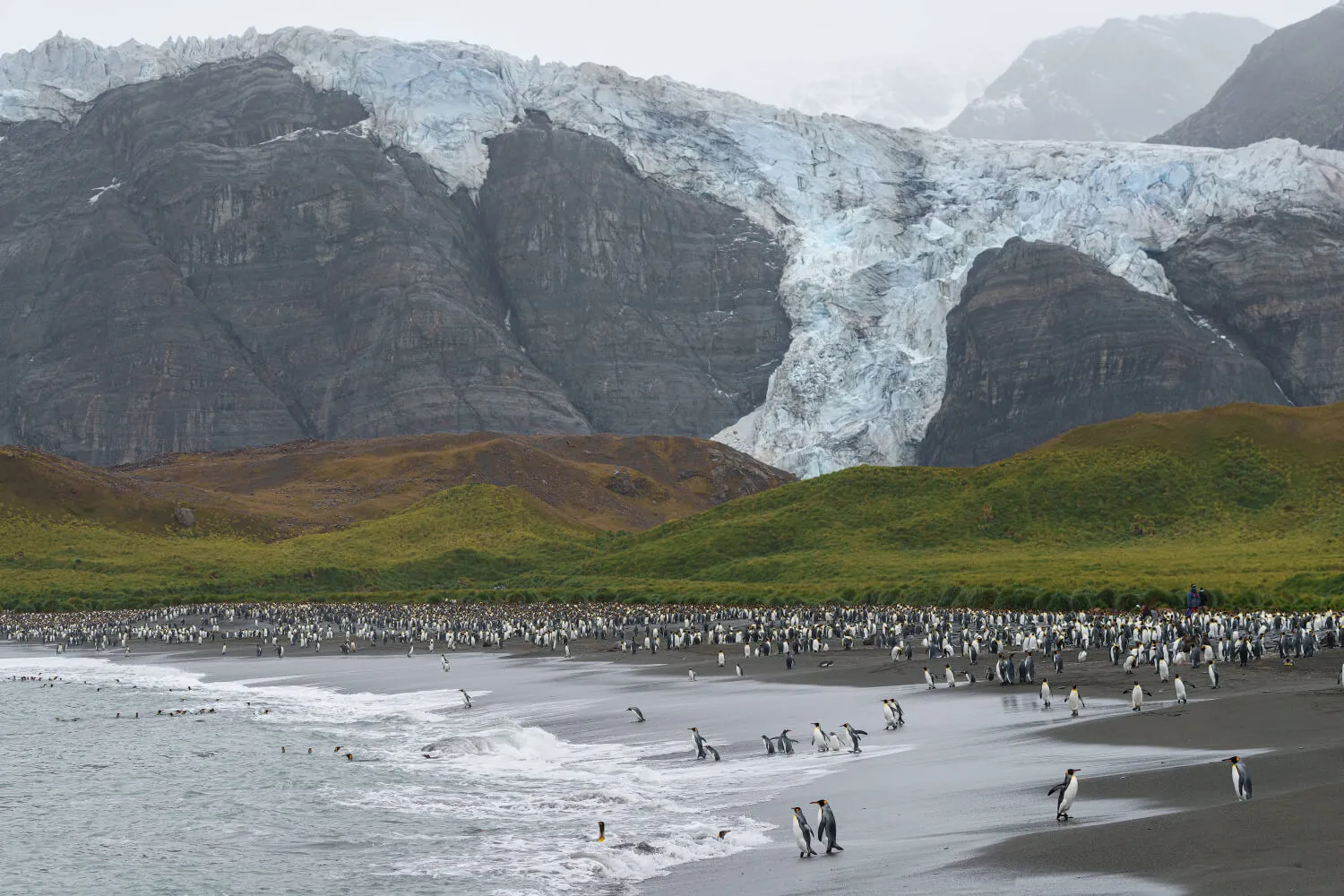

There’s no better way to immerse in the wonders of Antarctica than by getting to know some of its curious wildlife species.At Antarctica21, we're privileged to introduce our guests to the true stars of the White Continent – penguins! These remarkable birds have evolved specialized adaptations to thrive in one of Earth's most extreme environments. Not only do some penguins mate for life, but they’re also known to value community and live in large colonies along the continent’s rocky shores, always on the prowl for a meal of fresh krill to feed themselves and their young.

When you book an itinerary aboard one of our boutique vessels, our expert guides help you understand penguins and their fascinating adaptations and behaviors. Observing penguin colonies during our expeditions offers unparalleled insights into the complex ecosystems of Antarctica and the remarkable resilience of life in this frozen landscape. Let's explore the unique characteristics of the penguin species our guests may encounter during our expeditions.
Gentoo Penguins (Pygoscelis papua)
Gentoos have a circumpolar distribution, with colonies found on the Antarctic Peninsula, sub-Antarctic islands, and even as far north as the Galápagos Islands.
Likelihood on Antarctica21 cruises: Very high.
Gentoos are commonly seen on the Antarctic Peninsula and surrounding islands, making them a frequent and delightful sight for our guests. Easily identified by their white "bonnets" and bright orange bills, Gentoos are the third-largest penguin species. They're known for their adaptability, with a circumpolar distribution extending beyond Antarctica to sub-Antarctic islands. Gentoos are excellent swimmers, capable of diving up to 200 meters deep and reaching speeds of 36 km/h underwater. Their diet primarily consists of krill and small fish, which they hunt using their streamlined bodies and powerful flippers. Interestingly, Gentoos are monogamous during breeding seasons and often return to the same nesting sites year after year.

Adélie Penguins (Pygoscelis adeliae)
Adélies have a circumpolar distribution in Antarctica, with major populations in the Ross Sea region and along the Antarctic Peninsula.
Likelihood on Antarctica21 cruises: High to moderate, depending on the time of year.
Adélies are more abundant earlier in the season (November to early December) before they move further south. Named after the wife of French explorer Jules Dumont d'Urville, Adélies are true Antarctic specialists. They're easily recognized by the distinctive white rings around their eyes. These medium-sized penguins are incredibly well-adapted to the cold, with stiff, brush-like feathers that provide excellent insulation. Adélies are known for their impressive migrations, often traveling over 17,000 km round trip each year between their breeding colonies and winter feeding grounds. They're also indicators of environmental change, with populations fluctuating in response to variations in sea ice coverage and krill availability.

Chinstrap Penguins (Pygoscelis antarcticus)
Chinstraps are found primarily on the Antarctic Peninsula, South Shetland Islands, South Orkney Islands, and other sub-Antarctic islands.
Likelihood on Antarctica21 cruises: High.
Chinstraps are commonly seen on the Antarctic Peninsula and nearby islands, often in large colonies. Distinctive for the narrow black band under their heads, Chinstraps are abundant in the Antarctic Peninsula region. These penguins are remarkably agile, both on land and in water. They can leap up to 2.5 meters out of the water onto rocky shores. Chinstraps are primarily krill feeders and can dive to depths of 70 meters in pursuit of their prey. Their breeding colonies can be enormous, sometimes containing over 100,000 pairs. Interestingly, Chinstraps are known for their loud, harsh calls, which have been compared to a donkey's bray, earning them the nickname "stone cracker penguins."

Emperor Penguins (Aptenodytes forsteri)
Emperors are found around the entire Antarctic continent, but their colonies are typically located on stable pack ice in areas that remain frozen year-round.
Likelihood on Antarctica21 cruises: Very low.
Emperor penguin colonies are generally too far south to be visited on standard Antarctic Peninsula cruises. However, occasionally, individual Emperors might be spotted. The largest of all penguin species, Emperors stand at an impressive 1.2 meters tall. They're supremely adapted to the extreme Antarctic environment, capable of surviving temperatures as low as -60°C and winds up to 200 km/h. Emperor penguins have unique breeding biology: they're the only penguin species to breed during the Antarctic winter. Males incubate a single egg on their feet for about 65 days, fasting the entire time and losing up to 45% of their body weight. Emperors can dive deeper than any other bird, reaching depths of over 500 meters and staying submerged for up to 22 minutes.

King Penguins (Aptenodytes patagonicus)
King penguins are found on sub-Antarctic islands, including South Georgia, Crozet Islands, and Macquarie Island.
Likelihood on Antarctica21 cruises: Very low on the Antarctic Peninsula.
King penguins are occasionally seen on voyages that include South Georgia. Second only to Emperors in size, King penguins are distinguished by their striking orange-gold neck patches. Kings have a lengthy breeding cycle that takes 14-16 months, unlike most penguins, meaning they can only produce two chicks every three years. Their chicks have distinctive brown down feathers, historically leading sailors to mistake them for a separate species. King penguins are exceptional divers, regularly reaching depths of 100-300 meters in search of their preferred prey: small fish and squid. They have remarkable navigational abilities, able to locate their breeding colonies on sub-Antarctic islands after months at sea.

As climate change continues to impact this delicate environment, the opportunity to witness these incredible birds in their natural habitat becomes increasingly valuable, both for scientific understanding and for fostering a deep appreciation of Antarctica's unique wildlife.
Learn how you can have a chance to see them on a journey with us!
Start planning your next big adventure today! Review our limited-time promotions.
Related Articles
Experience the Extraordinary
From dramatic landscapes to close wildlife encounters, every journey to the White Continent is unique. Let's start planning yours together.











.avif)
_INT0328.avif)



